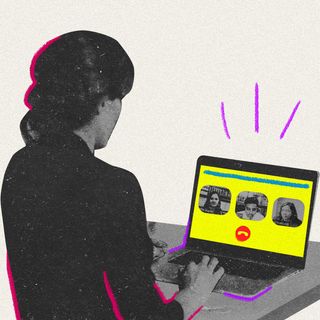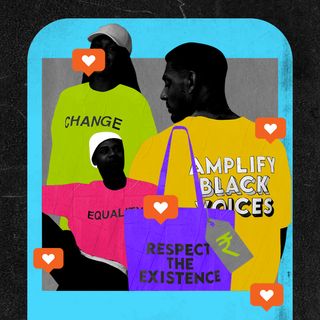
Is This Normal? “I Tear Up Every Time I Try to Pacify Someone Who’s Crying”
“[E]motions can really be contagious. It’s called emotional contagion, and sharing emotions can happen easier than you’d think.”

In this series, we dig into our strange phobias, fixations, and neuroses, and ask ourselves — Is This Normal?
I’ve never been good at mollifying a crying friend — primarily because I start tearing up myself. Sure, sometimes, it’s because I was moved, but that’s not nearly always the case — yet, I end up crying as if my life depended on manufacturing as much saline water as I possibly can. No amount of effort to control the waterworks has ever sufficed. Not only is this saga of emotions embarrassing, but it is also extremely unhelpful to both parties involved in the now-teary conversation.
Is this normal? Turns out, it might just be. Individuals of my ilk are called “sympathetic criers.”
“It’s funny how you can take on the emotions of another person, as if emotions or feelings are contagious,” states an article by Michigan State University. “But it’s true — emotions can really be contagious. It’s called emotional contagion, and sharing emotions can happen easier than you’d think,” it goes on to state.
Scientists have been researching the concept for decades now. Elaine Hatfield, a professor of psychology at the University of Hawai‘i, now 84, who has been involved in significant research on emotional contagion, believes the phenomenon is analogous to “monkey see, monkey do.” According to her, it results from our habit of mirroring the behavior of people we’re communicating with and, perhaps, even surrounded by. She says that “in conversation, people automatically and continuously mimic and synchronize their movements with the facial expressions, voices, postures, movements, and instrumental behaviors of others.”
What’s amusing is according to Daniel Rempala, a social psychologist, crying might actually be more contagious — than, say, laughter — because the activity attracts more attention, thus drawing us in. “People are more responsive to emotional contagion when they are paying attention to the other person, they care about the person, or they are especially good at reading another person’s emotional display,” noted Rampala.
Related on The Swaddle:
Is This Normal? “Every Time I Start to Feel Happy, I Get Scared Bad Things Will Happen”
Are some people more likely than others to fall into this emotional pattern? Yes, according to a paper from 1997, which suggests that people with higher “reactivity, emotionality, sensitivity to others, social functioning, [and] self-esteem,” are more susceptible to emotional contagion; while those with greater “self-assertiveness and emotional stability” aren’t. There is no good or bad here, no moral judgment; it purely depends on an individual’s emotional arc.
Given that I am a highly sensitive person, or HSP, which 20% of the global population is believed to be, the findings make sense — at least, in terms of ascribing reason to my inexplicable waterworks. My hypersensitivity may stem from my autism, which is interesting because like many others, my neurodivergence, too, makes it more difficult for me to regulate my emotions. Together, my emotional hypersensitivity and dysregulation not only explain why my emotions are so intense that I start crying the moment someone sheds a tear in my vicinity but also why, try as I might, I fail to regulate these emotions.
There’s yet another aspect to my neurodivergent experience that might catalyze the process: “camouflaging,” or the conscious or unconscious suppression of natural responses by people on the autism spectrum. This act is aimed at putting on their “best normal” so they can fit in, and avoid being coddled, babied, ostracized, hated on, harassed, or bullied for being different. An autistic person “may model the tone of their voice, the words they use, their smile, their eye contact, even their general mannerisms… by observing other popular or ‘liked’ kids,” Nidhi Singhal from Action For Autism (AFA), an NGO in New Delhi, had told The Swaddle in 2021.
That’s precisely how I’ve been camouflaging too. And often, what I’ve found myself doing in order to blend in more easily is to mirror almost aggressively — so much so that it’s almost on auto-pilot now. Naturally then, my brain believes it must turn on the waterworks the moment it’s informed of my geographical proximity to another crying human.
Knowing why I react thus to crying friends, I might feel less embarrassed the next time my tear ducts open the floodgates like clockwork the moment someone seeks my shoulder to cry on. Maybe, instead of advice, I can offer them my ears — and, possibly, a tub of ice cream — while my eyes pretend they’re (e)motion-sensitive faucets.
Devrupa Rakshit is an Associate Editor at The Swaddle. She is a lawyer by education, a poet by accident, a painter by shaukh, and autistic by birth. You can find her on Instagram @devruparakshit.
Related


Just How Much Do Virtual Meetings Impact Creativity?
